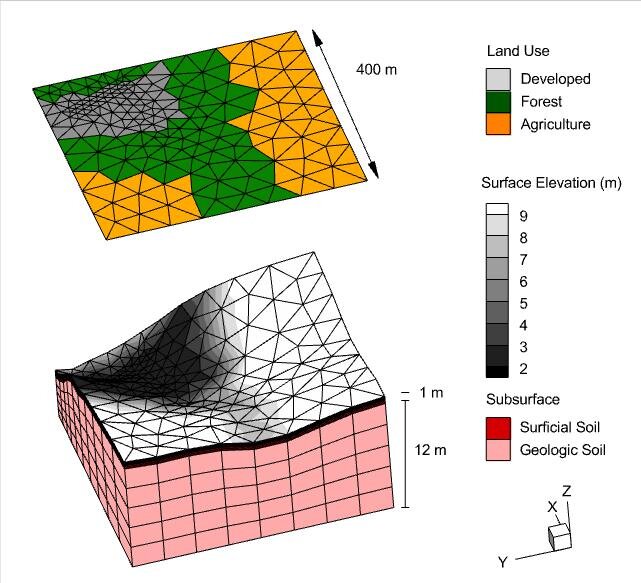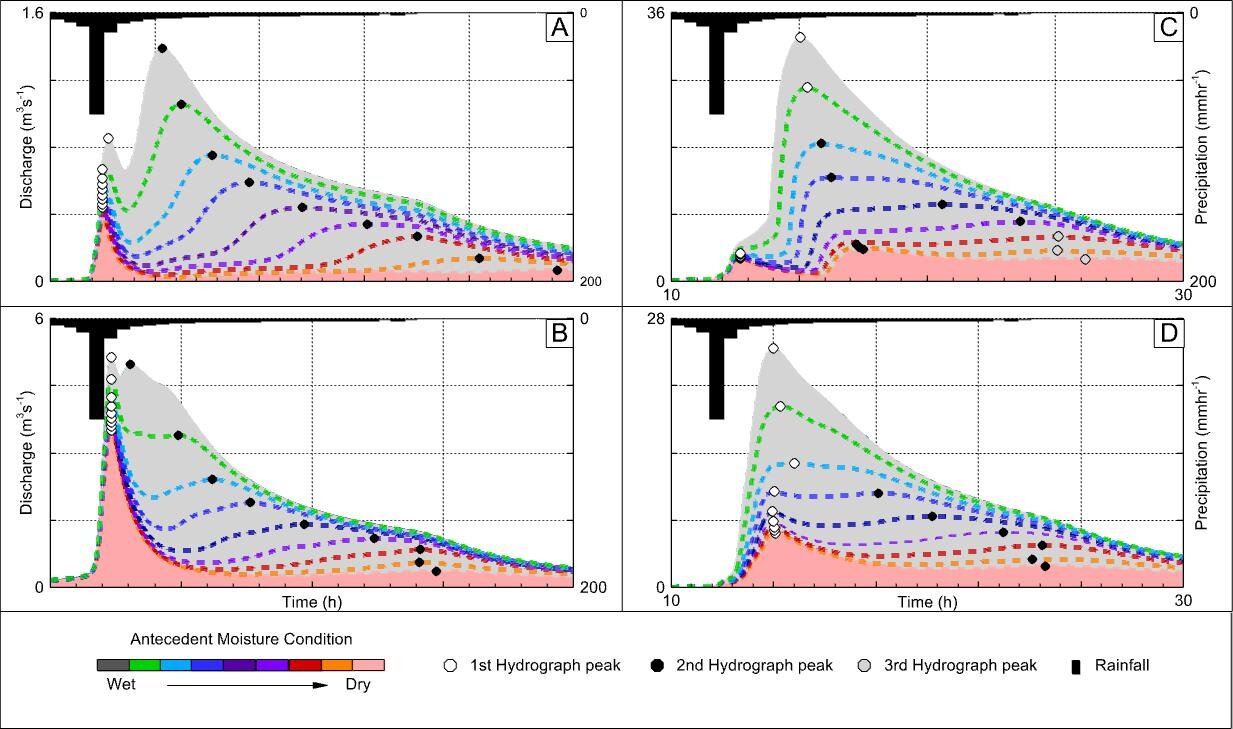HGS RESEARCH HIGHLIGHT – Characterizing the effects of dry antecedent soil moisture conditions, channel transmission losses, and variable precipitation on peak flow scaling
AUTHORS: N.W. Thomas, T.B. Ayalew, A.A. Arenas, K.E. Schilling, L.J. Weber & W.F. Krajewski
CLICK HERE TO READ THE ARTICLE.
While the historic flooding in British Columbia this month can obviously be attributed to extreme rainfall, it’s also believed that the extreme heat of the summer months made soils less permeable. This means that rain is more likely to run off the land rather than being absorbed, resulting in flash floods and landslides. In this case the diminished permeability can likely be attributed to soil ‘crusting’ (wildfires disperse waxy compounds which coat soil minerals and make the top layer of soil hydrophobic). But extremely dry conditions are also known to reduce the permeability of soils, even without the compounded effects of wildfires. A recent study by researchers at HDR Engineering, Berkshire Hathaway Specialty Insurance, Iowa State University and The University of Iowa investigates this very phenomenon.
The authors used HydroGeoSphere to examine the impact of antedecent moisture conditions on streamflow response in the Beaver Creek watershed (Iowa). Under wet conditions the models resulted in a consistent manner with a single peak in stream flows. Under drier initial conditions stream flows tended to diverge into multiple peaks, making it increasingly difficult to predict the scale of peak flows.
As climate change subjects watersheds to more frequent weather extremes, it becomes increasingly important for water resource managers to understand how streams and rivers respond to these events. This study provides just one example of how HydroGeoSphere can help us to explore the response of hydrologic systems in a changing climate.
CLICK HERE TO READ THE ARTICLE.
Abstract:
Peak discharge to drainage area relationships are widely applied engineering solutions for design flood estimation in ungauged basins. In this study we investigated the effects of antecedent moisture conditions (AMC), rainfall duration, and channel transmission losses on discharge-drainage area power law scaling relationships. The spatial organization of peak discharges were evaluated through coupled surface-subsurface physics based numerical modeling. We take advantage past research and the detailed flexibility of HydroGeoSphere, the numerical modeling platform, to systematically vary AMC and rainfall depths evolving the current understanding of the effects on discharge-drainage area relationships. Channel network dynamics in the Beaver Creek watershed dominated the location of a scale break, or the location where the log-log linear relationship between peak discharge and drainage area is best described by two or more slopes.
Model mesh and parameterization of surface and porous medium domains.
Single peaked hydrographs and high-quality power law scaling relationships resulted from wet AMC conditions or high precipitation depths. As we reduced the AMC, under low rainfall depths, the hillslope response diverged from the channel response, providing an unorganized system response no longer fitting the power law scaling relationship. Additionally, when initializing the system under losing stream conditions, where the stream channel is assumed unsaturated, a single peaked response ensued whereby the channel and hillslope responded in unison. This study adds to our current understanding of the physical basis of the variability of the scaling structure of peak discharges that is observed in single rainfall-runoff events by investigating the spatial organization of peak discharges under exceedingly dry antecedent soil moisture conditions.
Discharge over a range of antecedent moisture conditions for a 5-year return period precipitation event at various locations (see web version of the article for further details).


